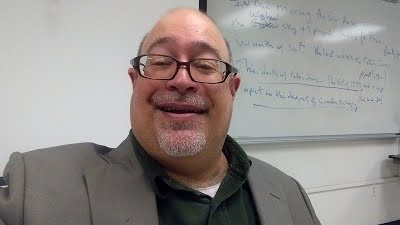Content Marketing Works
I promise you that content marketing works but it takes time and effort; critical details need to be thought through. Producing the first piece of content, in the first format that comes to mind is no more likely to work than asking the first person you see to marry you.
Let’s think about Content & Choice
Large or small, if you are looking to build awareness and influence for your brand, most experts will tell you that content marketing is crucial if not a critical step. I agree.
As critical as it is would be content marketers often fail to think beyond the first few content types they know. Just because a marketer knows about blogging doesn’t mean it is the right choice. Educational content (for example) is often overlooked.
There are many questions to ask about tone, voice and style, assuming blogging is right for your audience
Audience Audit
It’s rare to see a systematic approach which first considers the needs of potential and current customers (your audience), and the unique nature of the network it is on (i.e., blogging on Medium vs. REDDIT). The economics of creating and publishing content sustainably, and the subtle differences in format and styles also needs consideration.
The same video delivered through YouTube, VIMEO, Wistia or Facebook will have different economics (and reach) and offer different opportunities for targeting, tracking and measurement.
Content is Storytelling
Thinking about content marketing means thinking about stories — this includes content that educates.
How you tell stories and predicting (and tracking) how specific personas (or segment) will react to them is part of the process. Each creative choice impacts how well your content will resonate with your audience(s).
Picking a specific medium and network isn’t enough.
Creative choices can be strategic or tactical
Media choice can enhance or shape a story…
Thinking through the style of storytelling is an important choice. For example: video content covers a range of subtlety storytelling styles such documentary shorts which could have a range of tone from humorous, thoughtful or serious and extends to the selection of music, voice over artists and even lighting.
Compare a short video with a serious deep-bass voice over with high contrast black & white images and long lingering shots vs. the same length video shot with bright cheerful colors, narrated by a child’s voice using rapid cuts between shots.
The same considerations about video content should be asked for blogs, podcasts, graphics and more. That includes the economic considerations for midwifing compelling content. For example what is the cost of hiring, facilitating or coaching domain experts into telling “great stories” about your brands, your staff, your customers and the world that surrounds your enterprise.

PESO: Paid, Earned Shared & Owned
Content is content, and content impacts sales and customer retention in tangible ways; content is what content does.
You have to deploy your content across multiple mediums; that doesn’t mean you have to embrace every form of media and every network. Strategy and tactics matter. As actors are found of saying, “you have to make choices.” Marketers have make choices in terms of both hard, soft and opportunity costs.
Focusing on a single type of content distributed through a single medium is a mistake as would attempting to release a nearly unlimited array of content via every medium/network.
SEO: Why Content Marketing Works?
Content marketing works (in-part) because search engines like Google & Bing are optimized to seek out high quality content.
When search engines find good content, they display links to it; if your content is chosen it will appear (hopefully prominently) on search engine results pages (SERPs) whenever search terms (keywords) match your content. The more limited, specific, detailed, focused, and unique your content, the more limited, specific, detailed, focused, and unique your audience will be.
When high unique and specific keywords are used in the search, they are referred to as Long Tail Keywords (LTKs), meaning that they are less popular outliers in the search result.
Many content marketing teams try to create many pieces of content, very specific to their business, designed to appeal to these LTKs.
Google Isn’t Your Audience
Google matters but Google isn’t your audience.
Would be content marketers and those who are first learning about SEO often mistake Google (or Bing) as the audience for their content.
Google’s search engine isn’t your audience. Your customers are your audience and ultimately what works best for them is the best solution. While every content marketer should make sure they are following some of the basic technical aspects of SEO, overly optimizing your content for a particular search engine may work in the short run, but is not likely to work long term.
Quality Content is content that resonates with and inspires supports or helps your customer base
Educate Your Storytelling
Truth be told: there are many other types of content including white papers, infographics and ebooks.
Educational content is very under-utilized.
Educational content encompass web sites, applications and traditional software that provide instructions, computer mediated lessons, lecture materials (slides, video, etc.) combined with quizzes or tests, or even full scale online education like a Massively Open Online Course (MOOC). Educational content can be utilized by consumers before or during the sales cycle.
After a sale is made, many consumers and even B2B customers can benefit from additional education and training.
Onboarding & Selling Through Education
Think beyond content to drive sales, use content to drive retention and repeat business
From tchotchkes to million dollar medical devices, often it is only after the sale that people learn how much more they need to know to fully benefit from their purchase. Forums, chat rooms, FAQs and other common collections of knowledge and wisdom barely scratch the surface. A set of lectures, tests, quizzes, badges, awards, rewards, and online certifications can help your customers maximize the value of their purchase, turning a typical purchase into a dynamic, shareable success story.
Is Teaching Easy?
It’s hard enough getting employees to create content. Can you get them to create educational materials?
It is daunting enough when you start down the road to content marketing once you realize that you need to incentivize rank and file staffers, their managers and C-Suite executives into becoming writers and storytellers; you need to do this because your content has to come from authentic domain experts, not ghostwriters or freelancers. So yes, it could be scary challenge turning your domain experts into educators.
Truth is stranger than your imagination — humans are not only natural storytellers, they are also natural teachers, educators and (yes) students.

The Truth About Teaching & Learning
I recently heard a lecture by Cathy N Davidson, Distinguished CUNY Professor and director of its Future Initiative. Cathy is also the co-founder of HASTAC; Wikipedia helps explain what HASTAC is. “Humanities, Arts, Science and Technology Alliance and Collaboratory, pronounced ‘haystack’… a virtual organization of over 12,000 individuals and institutions dedicated to innovative modes of learning and research in higher education, K-12, and lifelong learning.” [Listen to my comments on Professor Davidson’s lecture.]
19th vs. 21st Century Learning
It is no wonder that people think they are unable to learn on their own, and to direct their own education… that’s what they were taught in school.
Activating Staff, Vendors and Partners
Would you allow your staff to spend time with your customer’s clients?
Value Given
It’s all about the People
According to Cathy Davidson, our current educational technology may have been recently coded, but in reality, it is perhaps a century and a half outdated.
Ancient Knowledge Gap
Professor Davidson, in classroom after classroom, has demonstrated that students, when given the responsibility to manage their own education, are able to plan, direct and collaborate to the point of being able to design their own courses, set their own learning objectives and outcomes, and to evaluate their own performance as well as that of their peers.
Bottom UP Learning
If you are considering creating content around the aforementioned learning opportunity between your staff, vendors and customers it is important to make a critical point: there isn’t any need for a C-Level executive to “manage” the outcome.
Professor Davidson has found that teachers can relinquish some control of their classroom to the students.
Sitting down with your customers (physically or virtually), it is likely (with little or no coaching) that your customers can articulate the learning outcome that they need; they will easily tell you what their objectives are. A perfect contribution to your content marketing would be a learning environment designed to foster detailed understanding about products, services, emerging technologies, including new and existing applications. Cathy and other educators make the same point about students.
Innovation & Opportunity
Can your staff work creatively, collaboratively focused on teamwork to solve problems?
A central theme of Cathy Davidson’s lecture was that today’s educational institutions are not teaching students how to work that way. Students are being taught to work alone, to avoid collaboration and to challenge innovation rather than to seek it. Cathy isn’t opposed to using technology in education (far from that), but in her lecture she seemed concerned about anything that stubbornly maintains educational standards from the 1860s, which will likely continue to fail in training prospective workers and managers for the 21st & 22nd centuries.
